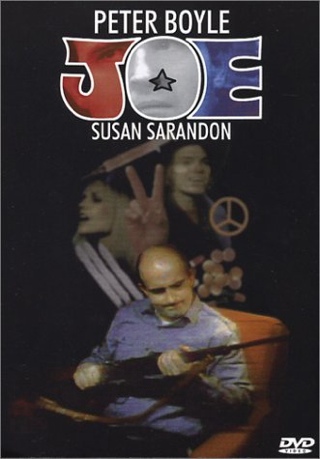Summary
This movie introduced the world to two new stars. One, Peter Boyle, became a star instantly, and still remains one today. We also get the debut of Susan Sarandon, who star really wouldn't shine until, well, how about "The Rocky Horror Picture Show"? She certainly shone for me there! However, she was a small if important figure in this movie, and it's Boyle who carries it.
What's strange about the film is that the "star" and title character does not get introduced until over thirty minutes into the film, before he virtually takes it over. We are first introduced to Sarandon and her hippy-dippy drug dealing boy friend. They are leading relatively aimless lives, and the boyfriend is as scummy as a drug dealer gets, in that he rips off his customers. When Sarandon overdoses, we are introduced to her parents, we see the first of two foil situations in this movie.
There are two tugs-of-war going on in this movie. There is the generation gap here, as the hippy kids can't figure out why the parents would want to work the way they do to get the life they lead. Yes, the parents are stereotypes of people who's joy in life consists of their evening cocktail, but the alternative presented by the kids here is not that appealing either.
Then there is the tug-of-war between white collar and blue collar. Sarandon's parents are relatively wealthy, and after the father has his "conflict" with the boyfriend, he drowns his sorrows in a bar. Enter Boyle, who has been raving about everything wrong with current society in a manner that must have inspired Archie Bunker. When white-collar tells Joe the blue-collar that he wailed on a hippie, he becomes Joe's hero.
A little too much though, as Joe starts involving himself in a life he can only imagine. We see scenes between the two, and then with their wives involved, that show much uncomfortable ness as they realize (well, all but Joe seem to realize) that they live in different worlds. But they also find that their bond (hating hippies) is strong enough that they even begin to admire each other.
The film takes no real sides in all four areas. All have their points, and all have their faults. The youth understandably don't want to turn into their parents, but don't seem to offer a decent alternative. The older people are too set in their ways, but they earned their livelihoods, and this is how they choose their later years. The white-collars are a bit spoiled, but they seem to have education on their side. The blue-collars have a lot of prejudices based on ignorance, but in a way are the salt of the earth. The strength of this picture is that this is all presented while telling an unusual male-bonding story.


